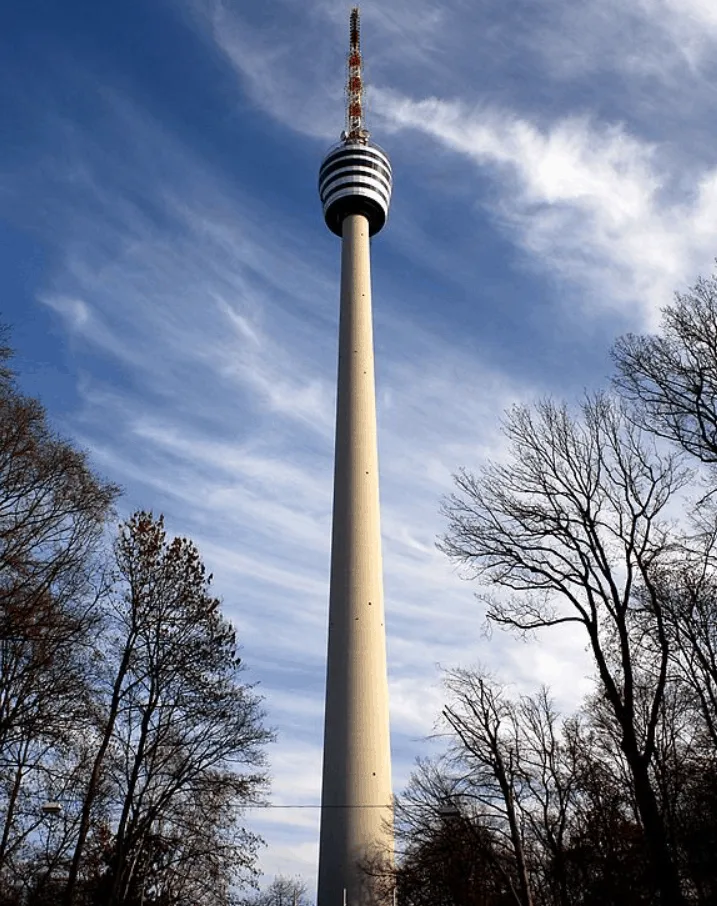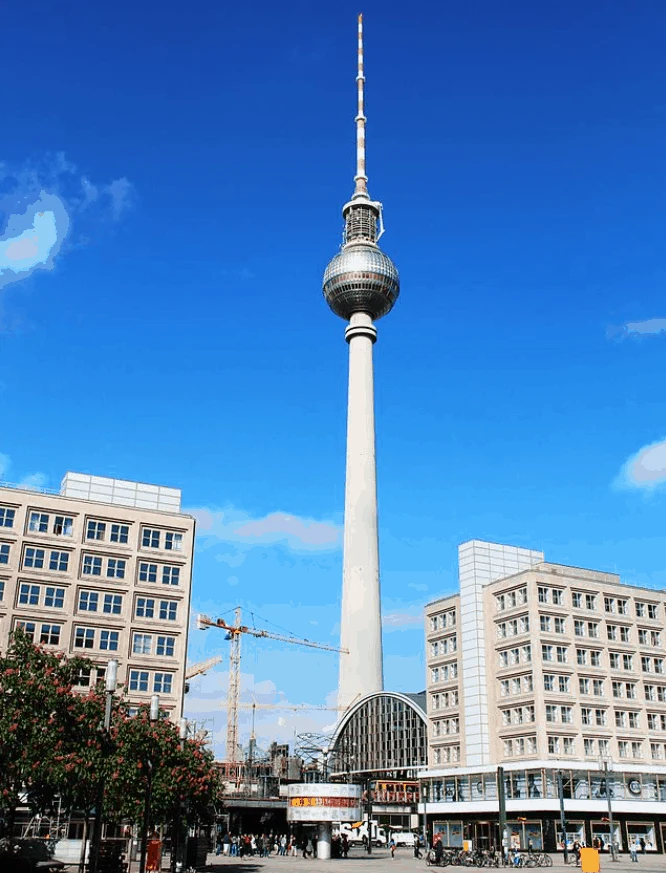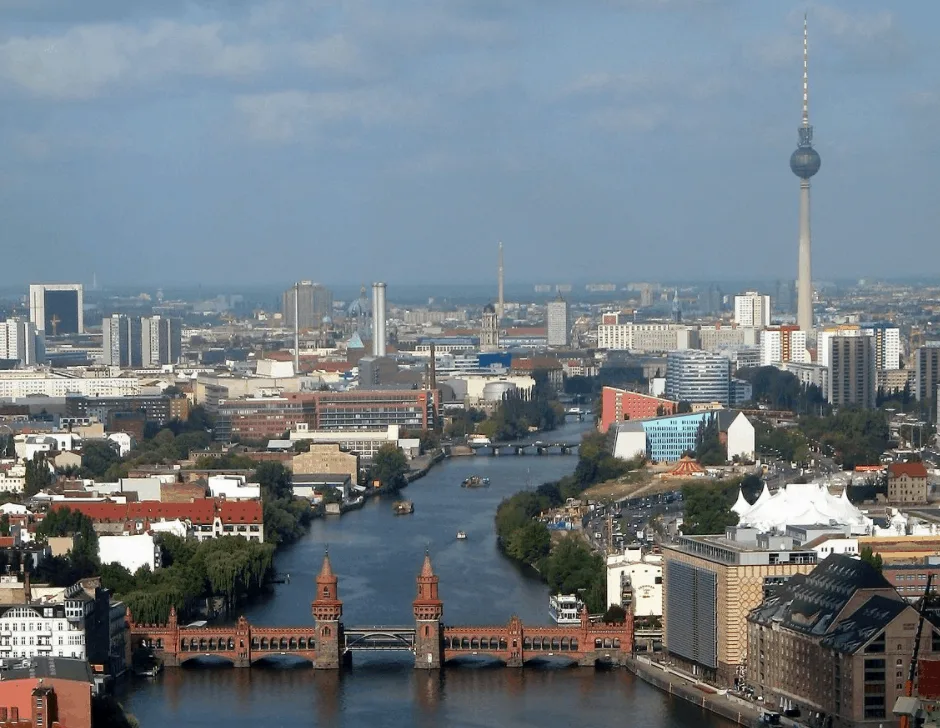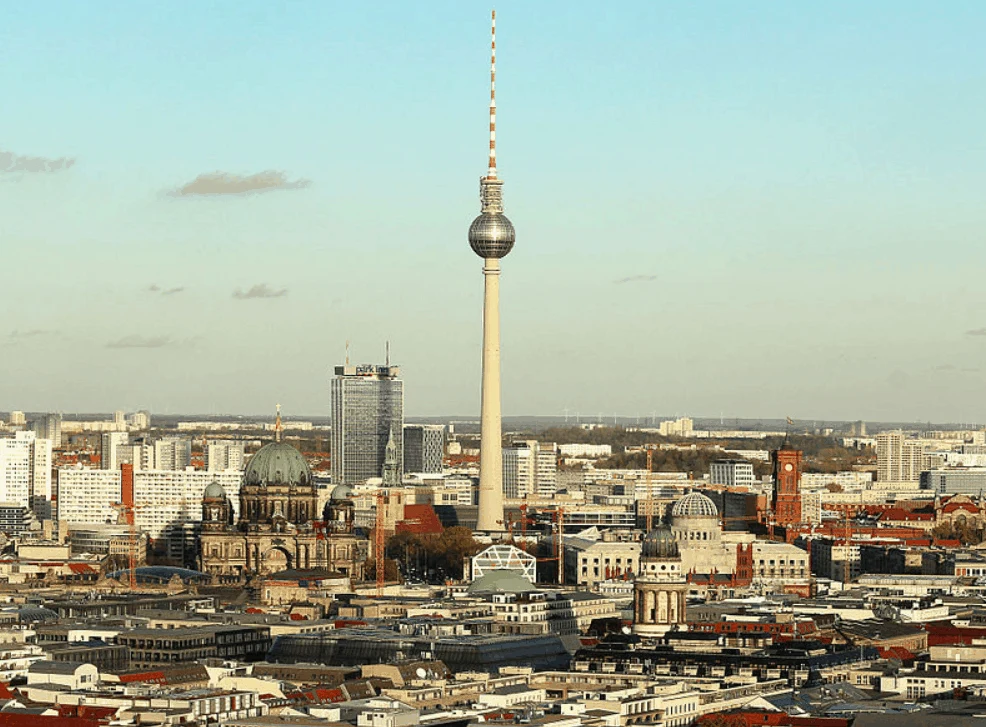Did you know that one of the most famous towers in Europe was built in the 1960s to become a symbol of the Communist government of East Germany?
Well, that didn’t work out too great, but the tower remains one of the most iconic buildings in Berlin today. In this post, you’ll discover the ultimate list of facts about the Berlin TV Tower.
1. The tower is located in the heart of Berlin
The Berlin TV Tower, known in Germany as the “Berliner Fernsehturm” or the “Fernsehturm Berlin,” is one of the most prominent landmarks in all of Berlin. This is for the simple reason that it’s not just the tallest building in the city with a height of 368.03 meters (1,207.45 feet), but also because of its central location in the city.
It’s located just to the southeast of the Alexanderplatz in the central Mitte district of Berlin, a popular square that was named after Tsar Alexander I of Russia. It’s one of the busiest squares in the city. The Berlin TV Tower isn’t part of the square though.
The tower is located just a few hundred meters to the northeast of other famous landmarks in Berlin such as the Brandenburg Gate, the Reichstag Building, and Checkpoint Charlie.
2. It’s the third-tallest structure in the European Union
The original height of the tower was 365 meters (1,198 feet). A couple of meters were added though when a new antenna was installed in the year 1997, making the tower rise to exactly 368.03 meters (1,207.45 feet).
This makes it the third-tallest structure in the European Union after the Torreta de Guardamar in Spain and the Riga Radio and TV Tower in Estonia.
One of the most interesting facts about the Berlin TV Tower is that it’s visible from just about every part of Berlin, including many of its suburbs!

3. It was built in the 1960s by the East German government
The tower was built between 1965 and 1969 by the GDR or the German Democratic Republic, best known as simply “East Germany.”

While its main purpose was to serve as a broadcasting tower to replace the network of smaller broadcasting stations around East Germany, it was also built as a status symbol for Communist East Germany.
4. A decision back in 1952 was the main reason it was built
At the European Broadcasting Conference in Stockholm in 1952, the GDR still wasn’t recognized politically by most countries at the meeting. Therefore, East Germany only received two measly frequency channels which simply wasn’t enough.
The Deutscher Fernsehfunk, the state broadcasting company of East Germany, simply didn’t have the infrastructure to provide a strong signal everywhere in the country.
Planning to build a massive tower started right after this decision in 1952.

5. It was supposed to be built in a different location
One of the most remarkable facts about the Berlin TV Tower is that the construction of the tower already started in the 1950s. The construction site was located in the southeast of Berlin.
Because it was too close to the Berlin Schönefeld Airport, the construction was halted in 1956 after numerous attempts to compromise were rejected.
This means that if these efforts to compromise had succeeded, the famous landmark in Berlin we know today wouldn’t even exist!
6. Its design was modeled on another tower in Germany
The Berlin TV Tower wasn’t the first tower of this scale constructed in Germany. Halfway through the 1950s, between 1954 and 1956, another tower was constructed in Stuttgart, a major city in the southwest of Germany.
The Stuttgart TV Tower, known in Germany as the “Fernsehturm Stuttgart,” became the inspiration for the tower in Berlin. It’s well shorter though as it only stands 216.61 meters (710.7 feet) tall.
Did you notice though? The accessible levels of the Stuttgart tower aren’t really a sphere. That’s because they wanted the sphere of the Berlin TV Tower to look like the first artificial Earth satellite, Sputnik.

7. Multiple architects were involved in its construction
To say that the construction of this massive tower in the 1960s was a huge endeavor is an understatement. Therefore, the GDR Government, who was the main contractor of the tower, hired multiple architects to work on the project.
Between 1965 and 1969, East German architects Hermann Henselmann, Jörg Streitparth, Fritz Dieter, Günter Franke, Werner Ahrendt, Walter Herzog, Gerhard Kosel and Herbert Aust, all worked on the design an construction of the tower.
8. It took less than 2 years to build the shaft of the tower
The work on the foundation of the tower started on August 4, 1965. About 8,000 cubic meters (282,517 cubic feet) of concrete were used for the shaft of the tower which weighs an astounding 26,000 tonnes. Yes, that’s 26 million kilos (57.32 million lbs)!
This makes it all the more incredible that less than 2 years later, on June 16, 1967, the shaft reached its final height and was resting on a foundation with a diameter of 42 meters (138 feet).

9. It was almost the highest building in the world upon completion
The tower was completed in the year 1969, and back then, only a few buildings were taller. The Berlin TV Tower was the second-tallest tower in the world after the Ostankino Tower in Moscow.
It was also the third-tallest freestanding structure in the world, after the tower in Russia and the Empire State Building in New York, arguably one of the most famous skyscrapers in the world!
10. It was officially opened after 53 months of construction
The opening of the Berlin TV Tower was a huge moment in the history of East Germany. Ever since the idea of the tower came about, the government wanted to turn its construction into something political.
That’s also the reason why they eventually chose to build the tower in a central location of Berlin after the initial location was deemed unsuitable.
Walter Ulbricht, the leader of the Socialist Unity Party which governed East Germany at the time, together with numerous high ranking officially opened the tower and a second state TV channel on October 3, 1969. This introduced two color TV channels in East Germany.

11. The cost of the tower seriously exceeded the budget
The original plan was to spend about 33 million marks on the project, a huge amount for a struggling East Germany. Many of the materials had to be imported and there was no euro back then so it had to be paid in foreign currencies with huge fees.
The original budget skyrocketed to 95 million marks by the time the shaft was completed.
When the huge sphere was installed, which consists of 7 floors and weighs about 4,800 tonnes, some damage occurred and water trickled into the shaft of the tower. Fixing this issue increased the overall budget to 132 million marks by the time the tower was completed!
12. Its observation deck offers amazing views of Berlin
The observation deck is located at a height of 203.78 meters (668.6 feet). Needless to say that it offers stunning views over the city of Berlin.
Want to eat in style?
You can even go higher and dine at the revolving restaurant at a height of 207.53 meters (680.9 feet). This restaurant rotates 360 degrees in about half an hour.

13. Do you want to take the elevator or the stairs?
So how do you get to the observation deck and revolving restaurant of the Berlin TV Tower?
The first option is quite enjoyable. 2 elevators take you to the sphere of the tower in about 40 seconds.
The other option?
You can also climb the stairs which contain exactly 986 steps!
14. It’s visited by over a million people every year
The Berlin TV Tower and its observation deck and revolving restaurant have become one of the most popular tourist attractions in Berlin. It’s visited by over 1.2 million people a year from over 90 countries in the world.
Hopefully, you won’t have to wait too long to go to the top because only 320 people are allowed in the sphere at any given time!

15. The tower has a couple of mocking nicknames
One of the funniest facts about the Berlin TV Tower is that it has a couple of funny nicknames. One of the nicknames is given to the reflection of the sun and is called “Rache des Papstes” or the “Pope’s Revenge.”
That’s because the reflection of the sun appears to be a cross on the shiny tiles of the stainless steel sphere of the tower. The revenge is a reference to the anti-religious views of Communist East Germany.
The other nickname is “Saint Walter,” referring to the leader of East Germany at the time the tower was constructed and officially opened.

